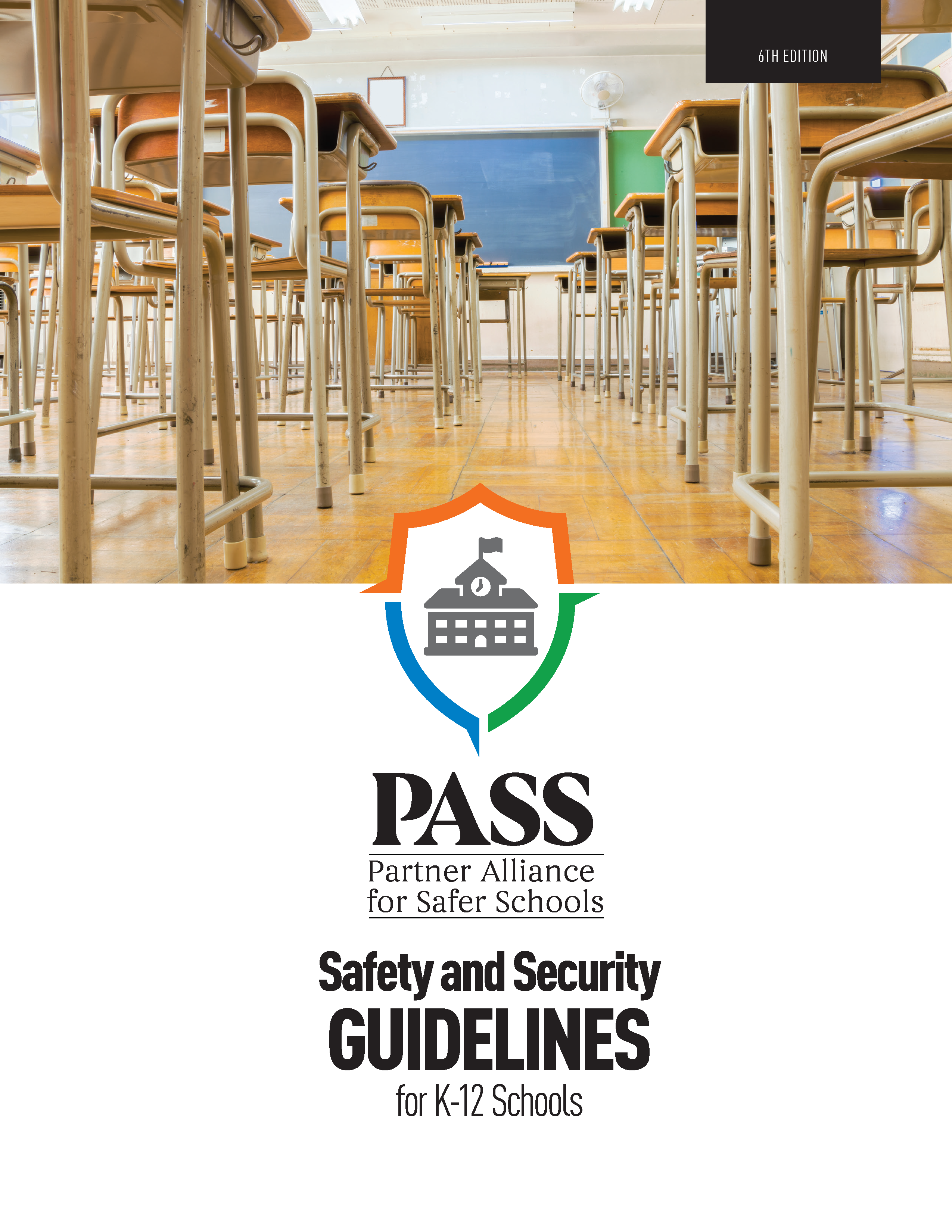What the Guidelines Cover
The primary focuses of the PASS Guidelines are physical security and life safety, and recommendations are limited to related policies, procedures, equipment and technology. Modern and effective security infrastructure is an essential element of any comprehensive school safety and security strategy, but not the only element. When other prevention efforts fail, facility security measures are critical to protection, mitigation and response. The Guidelines do not address every risk and every situation and, importantly, do not include product-specific recommendations.

Why Use the PASS Guidelines
- Support School Risk Assessments
- Develop School Safety & Security Plans
- Avoid Common School Safety & Security Pitfalls
- Inform Standards Development
- Strengthen School Grant Proposals & Bond Measures
Who the Guidelines Are For
While the PASS School Safety and Security Guidelines provide best practices designed primarily for the team responsible for the safety and security of individual schools and entire school districts, the Guidelines are also useful for interested community members, legislators, researchers and others with a focus or interest in improving K-12 school safety and security.


What’s New in the Sixth Edition?
The sixth edition of the PASS Safety and Security Guidelines strengthens our ability to help you develop a safe school plan, including crime prevention tactics, tips for staff training, and guidance on creating a crisis preparation plan. The Guidelines also advise you on how to get more involvement from key stakeholders such as community members, local law enforcement, parents, school board members, staff, and students.
Additionally, the sixth edition of the Guidelines offers new features, including a new Enhanced Technologies section detailing solutions under consideration by many schools and districts that show potential for significant improvements to school safety but may still need to be widely adopted. These include newer technologies in weapons detection, analytics, emergency communications, and biometrics.
Essential Concepts in the PASS School Safety and Security Guidelines
The PASS Guidelines use fundamental concepts throughout the document to help schools evaluate and prioritize their approach to safety and security:
- Layers – one of five physical layers
- Components – protective element within each layer
- Best Practices – recommended safety and security measures within each component
- Tier – each best practice is ranked on a tiered continuum, from 1 to 4, with higher tiers indicating increased protection
Each successive layer provides specific components to deter, detect or delay adversarial behaviors in the event that other layers are bypassed or breached.
Each layer includes basic protective elements, or components, of safety and security. The PASS Guidelines focus on the following safety and security components:
- Policies and Procedures
- People (roles and training)
- Communication
- Architectural
- Access Control
- Video Surveillance
- Detection and Alarms
- Transportation
- Cybersecurity
- Network Infrastructure
- Visitor Management
DISCLAIMER: The Safety and Security Guidelines for K-12 Schools (the “Guidelines”) are provided for informational purposes only. The individual contributors to the Guidelines, their employers, the organizations participating in the Partner Alliance for Safer Schools (PASS) and PASS itself make no warranties or guarantees regarding the information contained in the Guidelines, and expressly disclaim all liability for damages of any kind arising out of the use, reference to or reliance on the information contained in the Guidelines. The Guidelines are not a substitute for expert professional advice that may be required to address the specific facts and circumstances related to the implementation of a particular school safety and security measure or program.
